Removing the stubborn brown ring from your toilet bowl can seem like a daunting task, but with the right techniques and tools, it is entirely manageable. These unsightly stains are often caused by hard water deposits, mineral buildup, or rust, and they can quickly make your bathroom look less clean and inviting.
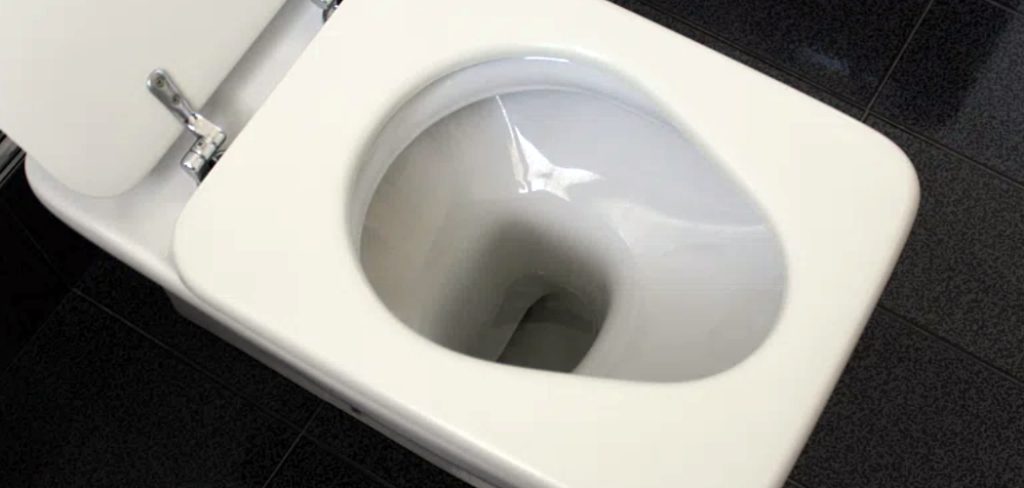
Thankfully, there are simple and effective methods to tackle these stains and restore your toilet bowl to its original shine. In this blog post on how to remove brown ring from toilet bowl, we’ll discuss some easy and natural ways to get rid of these stains and prevent them from coming back.
Needed Materials
Baking Soda:
Baking soda is a natural and gentle abrasive that can effectively scrub away stains without damaging the surface of your toilet bowl. It also helps to neutralize any unpleasant odors.
White Vinegar:
White vinegar is commonly used as a cleaning agent due to its acidic nature, which makes it effective in dissolving mineral deposits and rust. Its natural properties also help to disinfect and deodorize your toilet bowl.
Lemon Juice:
Lemon juice contains citric acid, which has powerful stain-fighting abilities. It can cut through grime and buildup on the surface of your toilet bowl, leaving it sparkling clean.
Toilet Brush:
A good quality toilet brush with stiff bristles is essential for scrubbing away stubborn stains from your toilet bowl.
Rubber Gloves:
It’s always a good idea to wear rubber gloves while cleaning your toilet to protect your hands from any potential bacteria or harsh chemicals.
8 Step-by-step Guidelines on How to Remove Brown Ring From Toilet Bowl
Step 1: Sprinkle Baking Soda
Begin by sprinkling a generous amount of baking soda directly onto the brown ring in your toilet bowl. Make sure the entire stained area is thoroughly coated with baking soda. This will help to loosen the buildup and provide an abrasive surface for effective cleaning.
Allow the baking soda to sit for a few minutes to start breaking down the stain. The longer you leave it, the more effective it will be.
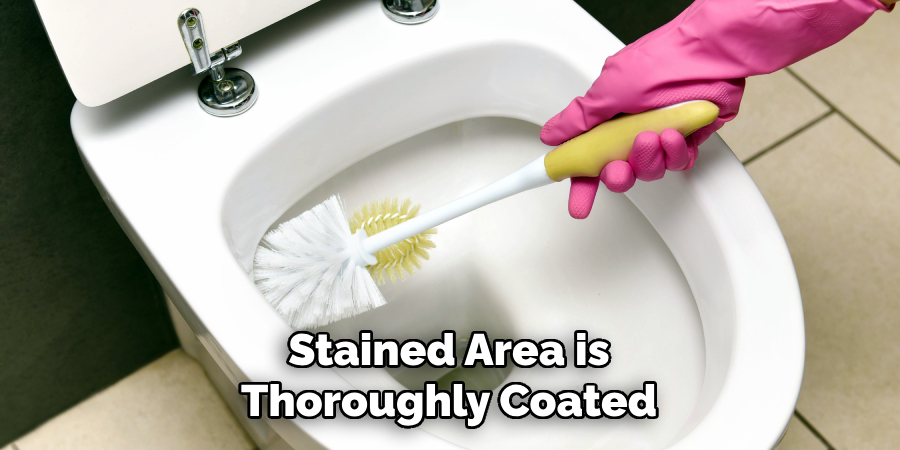
Step 2: Pour White Vinegar
Next, slowly pour white vinegar over the baking soda that you sprinkled on the brown ring. You will notice a fizzing reaction as the vinegar reacts with the baking soda. This chemical reaction helps to further break down the hard water deposits, mineral buildup, and rust that cause the stain.
Be sure to cover the entire stained area with vinegar to maximize its cleaning power. Allow the mixture to sit for about 10-15 minutes to give it time to penetrate and dissolve the stain.
Step 3: Scrub with Toilet Brush
After the mixture has had time to work, use your toilet brush to scrub the stained area vigorously. The combination of baking soda and vinegar should have loosened the stain, making it easier to remove. Continue scrubbing until you see a significant improvement in the appearance of your toilet bowl.
You can also use the toilet brush to scrub around and under the rim of your toilet bowl, as these areas are prone to staining as well.
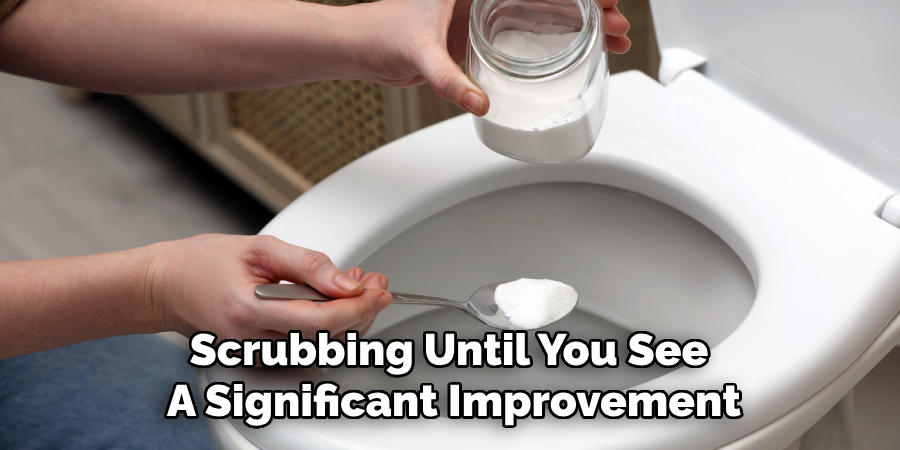
Step 4: Add Lemon Juice
Once you’ve scrubbed the area thoroughly, pour some fresh lemon juice over the stained section of the toilet bowl. The natural acidity of the lemon juice will enhance the cleaning process by breaking down any remaining stains and mineral deposits.
Plus, it will leave behind a fresh, citrusy scent that helps to deodorize your bathroom. Allow the lemon juice to sit for about 5-10 minutes to work its magic before proceeding to the next step.
Step 5: Scrub Again
After allowing the lemon juice to sit, take your toilet brush and scrub the stained area once more. The added acidity of the lemon juice should have further loosened any remaining stains, making them easier to remove. Be sure to scrub thoroughly, focusing on the brown ring and other areas with visible buildup. Use firm, circular motions to ensure maximum cleaning effectiveness.
Once you’re satisfied with the results, flush the toilet to rinse away the cleaning mixture and reveal a cleaner, brighter toilet bowl.
Step 6: Repeat if Necessary
If the brown ring is persistent and has not been completely removed, you may need to repeat the above steps until it disappears entirely. For tougher stains, you can let the mixture of baking soda, vinegar, and lemon juice sit for a longer period before scrubbing. However, avoid leaving them overnight as this can damage your toilet bowl’s surface.
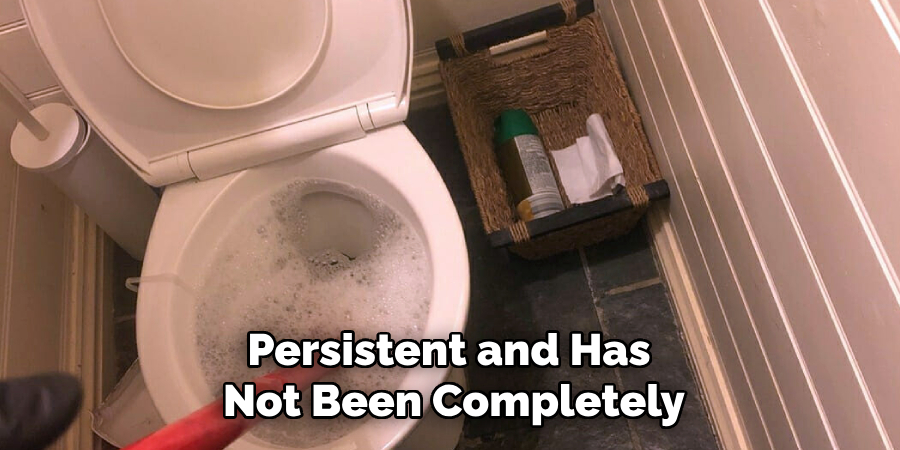
If the stain still doesn’t come off, you can try using a pumice stone to gently scrub away the remaining buildup. Be sure to wet the pumice stone and rub it gently on the stained area to avoid scratching your toilet bowl.
Step 7: Prevention Tips
To prevent future brown rings from forming in your toilet bowl, try these simple tips:
- Use a good quality toilet cleaner regularly to keep your toilet bowl clean and free from buildup.
- Make sure to flush properly after use to remove any debris or residue that may contribute to staining.
- Consider installing a water softener if you have hard water in your home, as this can significantly reduce mineral buildup in your toilet bowl.
- Avoid using harsh chemicals or bleach-based cleaners, as they can damage the surface of your toilet bowl and cause discoloration.
Step 8: Regular Maintenance
To maintain a clean and stain-free toilet bowl, it’s essential to establish a regular cleaning routine. A quick weekly scrub with baking soda and vinegar can help prevent buildup and keep your toilet sparkling clean. Also, be sure to replace your toilet brush regularly to avoid spreading bacteria and germs.
Following these simple guidelines on how to remove brown ring from toilet bowl can help you effectively remove brown rings from your toilet bowl and keep it looking clean and fresh. With regular maintenance and proper cleaning techniques, you can say goodbye to those pesky stains for good!
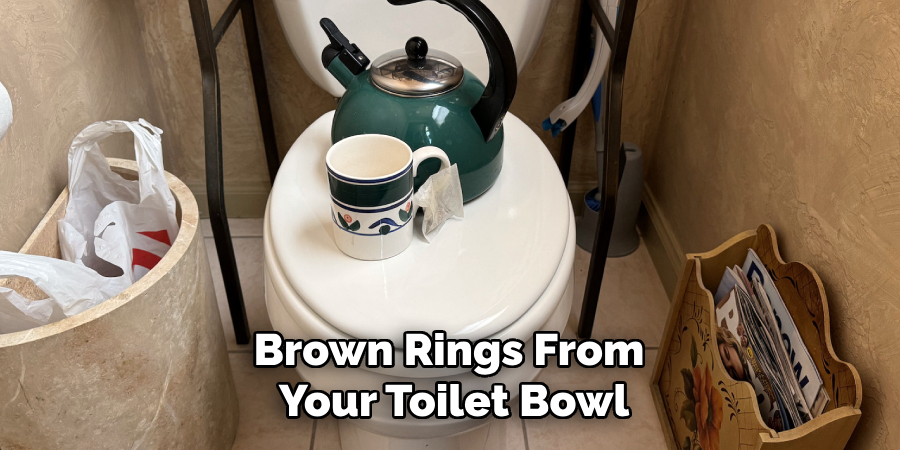
Additional Tips:
- If you have hard water in your area, consider using a water softener or installing a water filter to reduce mineral buildup in your toilet bowl.
- For tough stains and limescale buildup, you can also try using a commercial toilet bowl cleaner specifically designed to remove these types of stains.
- Regularly cleaning and disinfecting your toilet bowl not only keeps it looking clean but also helps to prevent the spread of germs and bacteria.
- Remember to always wear protective gloves and follow product instructions when using any cleaning solutions or chemicals in your bathroom. Safety first!
- Don’t forget to regularly clean your toilet brush after each use with a mixture of hot water, vinegar, and baking soda to keep it free from bacteria and odors.
By following these steps and additional tips, you can effectively remove brown rings from your toilet bowl while maintaining a clean and hygienic bathroom for you and your family.
Frequently Asked Questions
Q: Can I Use Other Types of Vinegar Besides White Vinegar?
A: While white vinegar is the most commonly used type for cleaning purposes, you can also try using apple cider vinegar or lemon juice as alternatives. However, be aware that these may not be as effective as white vinegar in removing tough stains.
Q: How Often Should I Clean My Toilet?
A: It’s recommended to clean your toilet at least once a week, with a more thorough cleaning every 1-2 weeks. However, the frequency may vary depending on how often your toilet is used and personal preference.
Q: Is It Safe to Mix Baking Soda and Vinegar Together?
A: Yes, it is safe to mix baking soda and vinegar together for cleaning purposes. In fact, the chemical reaction between the two can help to enhance their cleaning power. Just be sure not to leave the mixture sitting overnight as it can damage your toilet bowl’s surface.
Q: Can I Use a Pumice Stone on Colored or Porcelain Coated Toilet Bowls?
A: It’s not recommended to use a pumice stone on colored or porcelain-coated toilet bowls as they can cause scratching and damage. Instead, try using the baking soda, vinegar, and lemon juice method first before resorting to a pumice stone.
Q: How Can I Remove Stubborn Stains at the Bottom of the Toilet Bowl?
A: For stubborn stains at the bottom of the toilet bowl, you can try using a toilet brush with stiff bristles or an old toothbrush to scrub them away. You may also need to let the cleaning mixture sit for longer before scrubbing. If the stain persists, try using a pumice stone as a last resort.
Conclusion
Removing brown rings from your toilet bowl doesn’t have to be a daunting task. With the right tools, natural cleaning agents like baking soda and vinegar, and a bit of patience, you can restore your toilet to its pristine condition.
By following the outlined steps on how to remove brown ring from toilet bowl and incorporating regular maintenance into your cleaning routine, you can prevent future stains and ensure a fresh, hygienic bathroom. Remember, consistency is key, and a little effort goes a long way in keeping your toilet bowl spotless and sparkling.